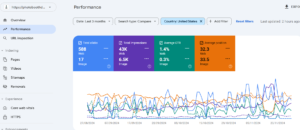Best Local SEO Strategy for Flooring Contractors and Floor Contractors Companies
Establishing a robust local SEO strategy is paramount for success in a fiercely competitive world of flooring contractors and companies. Local search engine optimization (SEO) optimizes your online presence to attract more business from relevant local searches. For flooring contractors, whose services are often sought after by residents and businesses, a well-crafted local SEO strategy Flooring Contractors can significantly boost visibility, credibility, and ultimately, profitability.
First and foremost, understanding the unique dynamics of the local market is crucial. Local seo for flooring contractors operate within specific geographic areas and tailor SEO efforts to target local keywords, such as ”flooring service,” ”city flooring services Florida near Me” ”hardwood flooring Florida” ” hardwood flooring nearby,” ”hardwood flooring Jacksonville fl,” “hardwood flooring installation,” or “hardwood flooring near me,” can help capture the attention of nearby customers actively seeking such services.
1. Keywords Research:
When it comes to local SEO for flooring contractors, conducting thorough keyword research is crucial for optimizing your website and local seo content.
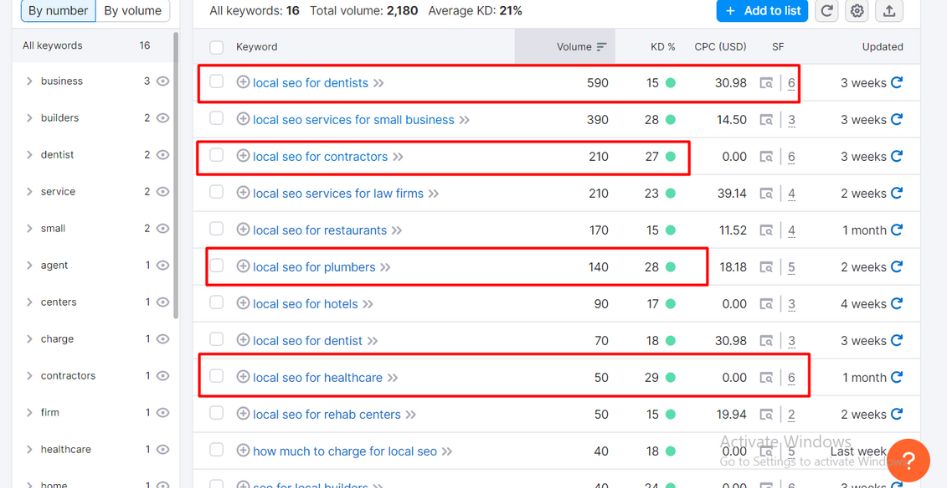
There are two main types of keywords to consider:
Implicit Keywords:
These are terms that users might search for when looking seo marketing for flooring contractors in their local area. Examples include “flooring installation near me,” “local flooring contractors,” or “best floor contractors in my city.” etc.
Explicit Keywords:
These are specific terms related to the services you offer or the types of flooring materials you work with. Examples include “Hardwood Floor Installation City” “Carpet Replacement in Florida,” ”my City’s Laminate Flooring” “Tile Flooring Specialists” ”flooring Contractor My Area” ”flooring Contractors Near Me” ”flooring Stores Near Me” etc.
Now, here are some free and paid keyword research tools for SEO that you can use for local keyword research–
5 Best Free Keyword Research Tools
5 Best Paid Keyword Research Tools
to identify relevant keywords with high search volumes and low competition in your target geographic area.
2. Competition Analysis:
Analyzing your keyword competitors’ strategies can provide valuable insights into what is working in your industry and where you can improve.

Here’s how to analyze your competition for local SEO:
Keyword Analysis:
Identify the keywords your competitors are targeting in their website content, meta tags, and anchor text. Pay attention to which keywords are driving the most traffic to their sites.
- In-depth Competitors: Identify the main competitors in your niche.
- Market Research: Analyze competitors’ products, services, and pricing strategies.
- SEO Comparison: Evaluate competitors’ website SEO performance.
- Product or Service Comparison: Compare your offerings with those of your competitors in terms of features, quality, pricing, and customer value. Identify areas where you excel and where you might be falling short.
- Content Analysis: Assess competitors’ content quality, relevance, and engagement.
- Backlink Study: Examine competitors’ backlink profiles for insights.
- Keyword Strategy: Identify keywords competitors rank for and their SEO strategies.
- Social Media Presence: Evaluate competitors’ social media activities and engagement.
- SWOT Analysis: Conduct a SWOT analysis to understand strengths, weaknesses, opportunities, and threats.
- Actionable Insights: Use findings to refine your SEO strategy and gain a competitive edge.
- Continuous Monitoring: Regularly monitor competitors to stay updated and adapt strategies accordingly.
On-Page Factors:
When it comes to optimizing your website for search engines, On-Page Factors play a crucial role in determining your website’s visibility and ranking. These factors encompass various elements that you have direct control over on your web pages. By strategically optimizing these elements, you can enhance your website’s relevance, authority, and user experience, thereby improving its search engine ranking position (SERP).

Key On-Page Ranking Factors for SEO:
- Title Tags: Crafting compelling and keyword-rich title tags is essential for signaling the relevance of your content to search engines and users.
- Meta Descriptions: Writing informative and engaging meta descriptions can improve click-through rates and provide search engines with additional context about your page.
- Heading Tags: Properly structured heading tags (H1, H2, etc.) help organize your content hierarchically and improve readability for both users and search engines.
- Keyword Optimization: Strategically placing relevant keywords throughout your content, including in headings, paragraphs, and image alt text, helps search engines understand the topic of your page.
- URL Structure: Creating clean and descriptive URLs that include target keywords can improve both user experience and search engine crawlability.
- Image optimization:
- Schema markup:
- Internal links:
- Alt text:
- Social signals:
- Content Quality: Publishing high-quality, relevant, and engaging content is paramount for attracting and retaining visitors, earning backlinks, and boosting search engine rankings.
By focusing on these On-Page Factors and implementing best practices, you can optimize your website to better meet the needs of both users and search engines, ultimately driving organic traffic and achieving your on-page SEO goals
Off-Page Factors:
Assess your competitors’ backlink profiles to understand where their external links are coming from and the authority of those sources. This can help you identify potential link-building opportunities for your website.
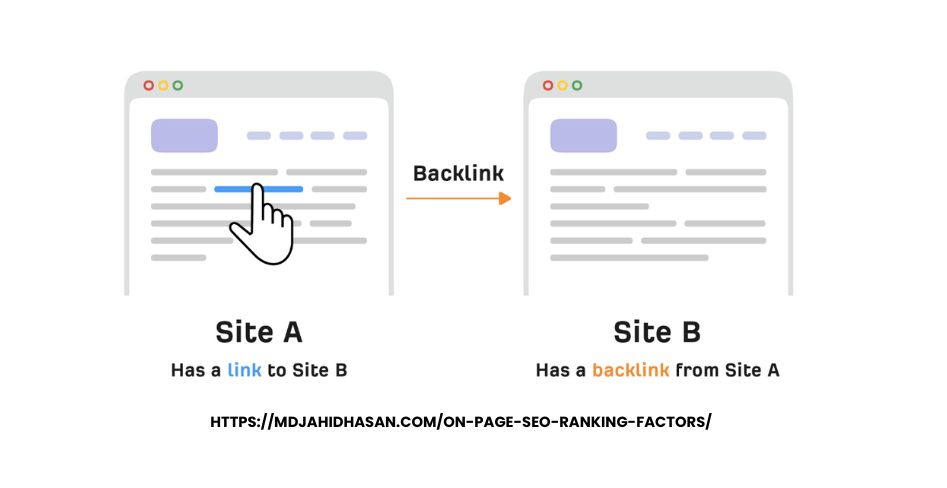
Key Off-Page Factors for SEO:
- Backlinks: High-quality backlinks from authoritative websites signal to search engines that your site is reputable and worthy of attention.
- Social Signals: Engagement and shares on social media platforms contribute to a website’s visibility and credibility.
- Online Mentions: Brand mentions across the web, even without a direct link, can positively impact SEO.
- Guest Blogging: Contributing valuable content to other websites in exchange for backlinks strengthens your site’s authority and expands its reach.
- Directory Listings: Being listed in relevant directories improves visibility and validates your site’s authenticity.
- Influencer Endorsements: Collaboration with influencers or industry experts can boost your site’s credibility and attract new audiences.
- Local SEO: Optimizing for local search, including local business listings and reviews, enhances visibility for geographically targeted searches.
Focusing on these off-page factors, you can bolster your website’s SEO performance, increase organic traffic, and establish a strong online presence in your niche or industry.
Technical Factors:
When it comes to optimizing your website for search engines, Technical Factors play a crucial role in determining your online visibility and ranking. These factors involve the technical aspects of your website’s structure and performance that directly impact its search engine friendliness and user experience. Understanding and optimizing these elements are essential for improving your website’s search engine ranking and driving organic traffic.
Key Technical Factors for SEO:
- Website Speed: Ensure your website loads quickly to provide a seamless user experience and avoid high bounce rates.
- Mobile Responsiveness: Optimize your website to be mobile-friendly, as search engines prioritize mobile-first indexing for ranking.
- Crawlability and Indexability: Make sure search engine bots can easily crawl and index your website’s content by optimizing your site structure and using proper tags like robots.txt and sitemap.xml.
- Site Architecture: Organize your website’s content logically with clear navigation and URL structures to enhance user experience and search engine accessibility.
- Technical SEO Audits: Regularly conduct technical SEO audits to identify and fix issues like broken links, duplicate content, and server errors that could hinder your website’s performance in search results.
focusing on these Technical Factors, you can effectively optimize your website for search engines, improve user experience, and ultimately boost your online visibility and organic traffic.
Review your competitors’ website structure, page load times, mobile-friendliness, and schema markup implementation. Address any technical issues on your site to ensure optimal performance in search results.
Tools to Use-
3. Site Architecture:
Site architecture refers to the layout and organization of a website’s pages, content, and navigation structure. It serves as the foundation upon which user experience, search engine optimization (SEO), and overall website performance are built. A well-designed site architecture enhances usability by ensuring visitors can easily find what they’re looking for and navigate through the site seamlessly.
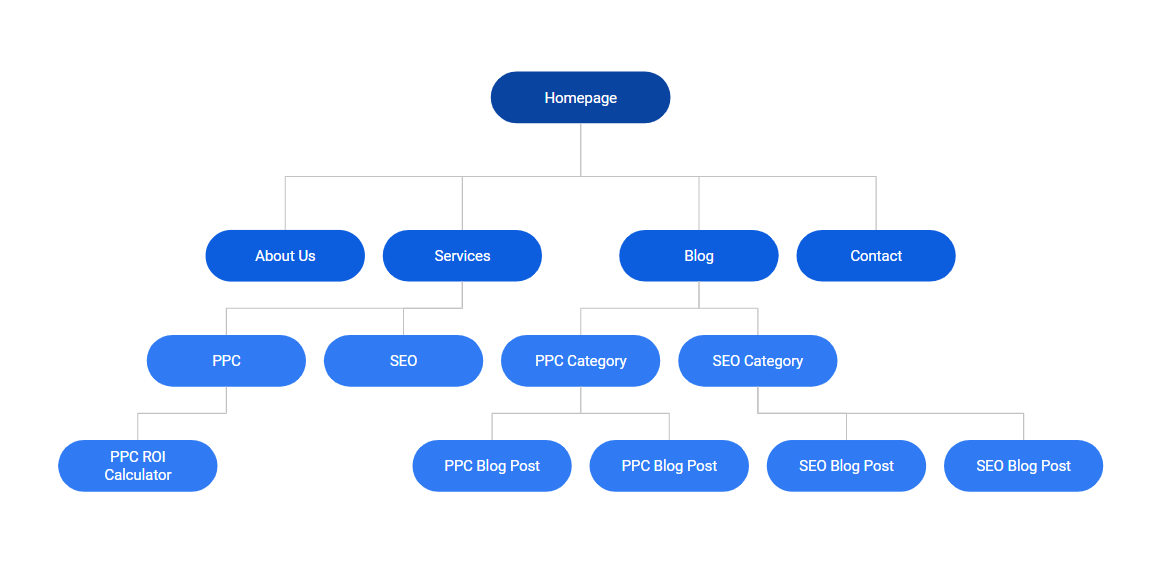
At its core, site architecture involves structuring content hierarchically, with main categories branching into subcategories and individual pages. This hierarchical structure not only helps users locate information efficiently but also aids search engines in understanding the site’s content and relevance to user queries.
Plan Out the Hierarchy:
When structuring your website, it’s essential to plan out a clear hierarchy that makes it easy for users to navigate and for search engines to crawl. Start with broad categories like “Services,” “About Us,” and “Contact,” then organize subcategories under each main section to provide more detailed information. For example, under “Services,” you could have sections for “Flooring Installation,” “Repair Services,” and “Flooring Materials.”
Navigation:
Your website’s navigation should be intuitive and user-friendly. Use descriptive labels for menu items that clearly indicate what content users can expect to find. Consider implementing dropdown menus for subcategories to keep the navigation clean and organized. Ensure that your navigation is consistent across all pages of your website to provide a seamless browsing experience.
Internal Linking Structure:
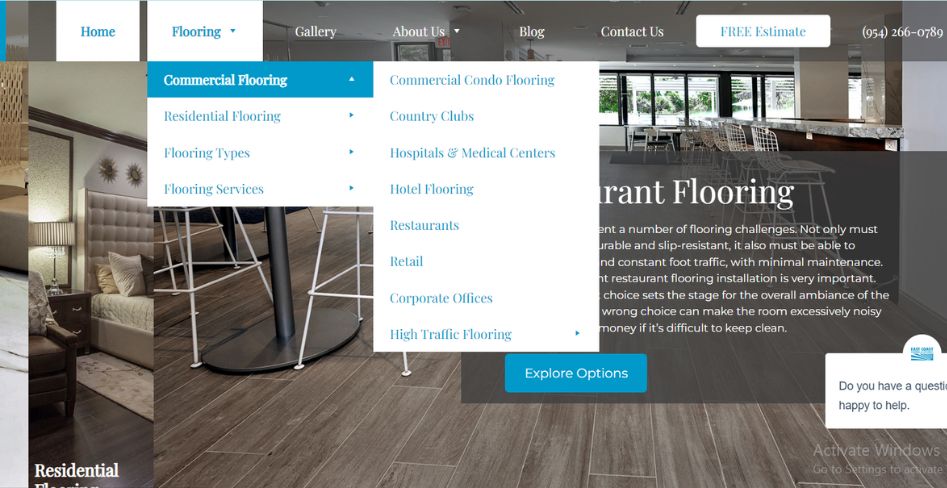
Internal linking is crucial for both user experience and SEO. By linking relevant pages within your website’s content, you can help users discover additional information and improve the flow of link equity throughout your site. Be strategic about where you place internal links, focusing on anchor text that includes relevant keywords and directing users to valuable resources or service pages.
4. Home Page Content Strategy:
Your home page is often the first impression visitors will have of your flooring contracting business, so it’s essential to make it informative and engaging. Here’s how to craft an effective home page content strategy:
Introduction: Start with a brief introduction to your company, highlighting your expertise in flooring installation, repair, and materials.
Key Services: Feature your primary services prominently on the home page, providing brief descriptions and enticing calls-to-action to encourage users to explore further.
Testimonials or Reviews: Incorporate testimonials or reviews from satisfied customers to build trust and credibility with potential clients.
Call-to-Action: Include clear calls-to-action throughout the home page, prompting visitors to contact you for a consultation or to learn more about your services.
Visual Elements: Use high-quality images or videos of completed flooring projects to showcase your workmanship and attract attention.
5. Service Pages:
Each service page on your website should provide detailed information about the specific flooring services you offer. Here’s how to structure your service pages effectively:
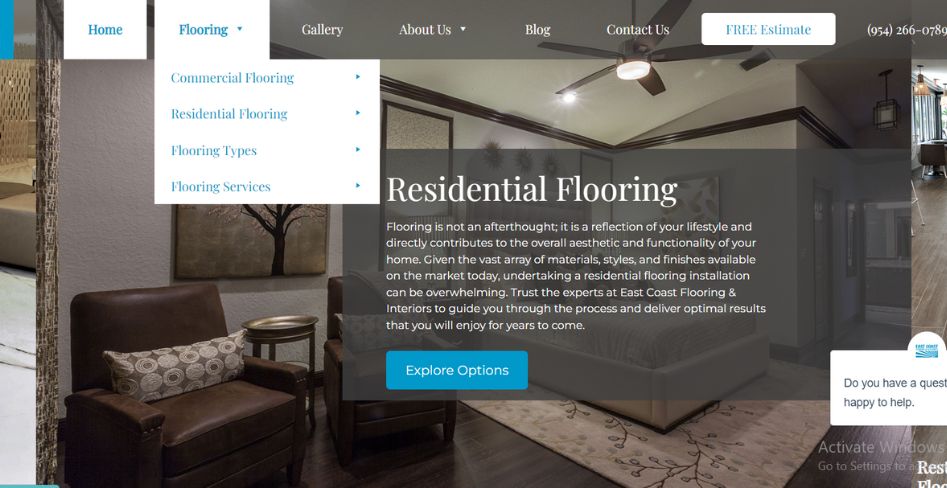
Service Description: Provide a comprehensive description of the service, including the types of flooring materials you work with and any specialized techniques or equipment you use.
Benefits: Highlight the benefits of the service, such as improved aesthetics, increased property value, or enhanced durability.
Before-and-After Photos: Include before-and-after photos of past projects to demonstrate the quality of your work and the transformative impact of your services.
FAQs: Anticipate common questions potential clients may have about the service and address them on the page to provide helpful information and alleviate concerns.
6. Contact Us Page:
Your Contact Us page is a crucial component of your website, as it provides visitors with a direct means of reaching out to you.
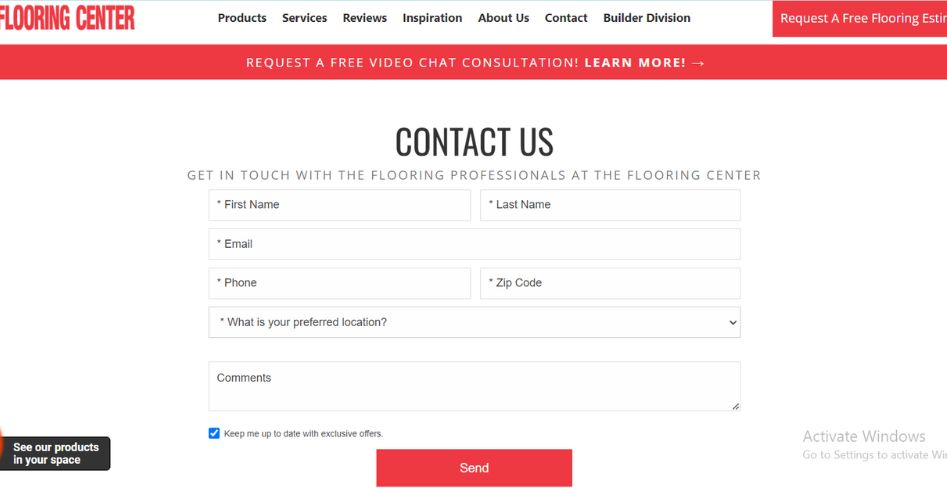
Here’s what to include on your Contact Us page:
Contact Information: Display your company’s contact information, including phone number, email address, and physical location if applicable.
Contact Form: Include a contact form that visitors can fill out to send inquiries or requests for quotes directly to your inbox.
Business Hours: Specify your business hours so visitors know when they can expect a response to their inquiries.
Location Map: If you have a physical storefront or showroom, embed a Google Maps widget to make it easy for visitors to find your location.
7. Location Page:
If you serve multiple geographic areas, consider creating individual location pages to optimize your website for local search. Here’s what to include on each location page:
Location-Specific Information: Customize each location page with information relevant to the area it serves, such as local landmarks, neighborhoods, or community events.
Service Area Map: Include a map highlighting the areas you serve to help users understand your coverage area at a glance.
Local Keywords: Incorporate local keywords into the page content, meta tags, and headings to improve your visibility in local search results.
Customer Testimonials: If you have served clients in the area, include testimonials or reviews from satisfied customers to establish credibility with local visitors.
Website Design and Development:
Flooring Website Templates:
When designing your website, consider using templates specifically tailored for flooring contractors or home improvement businesses. These templates often come with pre-designed layouts and features that are optimized for showcasing your services and portfolio effectively. Look for templates that include galleries for showcasing before-and-after photos, service pages with clear calls-to-action, and easy-to-navigate menus.
Page Speed:
Page speed is a critical factor for both user experience and SEO. Ensure that your website loads quickly on all devices by optimizing images, minimizing server response times, and leveraging browser caching. You can use tools like Google PageSpeed Insights or GTmetrix to identify areas for improvement and optimize your website’s performance accordingly.
Mobile-Friendliness:
With the increasing use of mobile devices for browsing the internet, it’s essential to ensure that your website is mobile-friendly. Choose a responsive design that adapts seamlessly to different screen sizes and resolutions, providing users with a consistent and intuitive experience across devices. Google also prioritizes mobile-friendly websites in its search rankings, making mobile optimization crucial for SEO.
Strong Security:
Protecting your website from security threats is paramount to maintaining the trust of your visitors and safeguarding their sensitive information. Invest in robust security measures such as SSL certificates, regular software updates, and secure hosting providers to prevent data breaches and malicious attacks. Additionally, implementing measures like CAPTCHA forms and firewalls can further enhance your website’s security.
Blog Section Strategy:
A blog section can be a valuable addition to your flooring contractor website, allowing you to showcase your expertise, provide helpful tips and advice to potential clients, and improve your search engine visibility through regular content updates. Here’s how to develop a successful blog section strategy:
Content Planning:
Identify topics that are relevant to your target audience and aligned with your business’s expertise. Consider addressing common questions, sharing project showcases, discussing industry trends, or providing DIY flooring tips.
Consistent Posting Schedule: Establish a regular posting schedule to keep your blog fresh and engaging. Whether it’s weekly, bi-weekly, or monthly, consistency is key to building a loyal readership and maintaining your website’s relevance in search results.
Optimized Content:
Prioritize quality over quantity when creating blog posts, ensuring that each piece is well-written, informative, and optimized for relevant keywords. Incorporate long-tail keywords related to flooring services and local search terms to attract targeted traffic to your website.
Engagement Opportunities:
Encourage reader engagement by enabling comments on your blog posts and responding promptly to questions and feedback. You can also incorporate social sharing buttons to make it easy for visitors to share your content on their social media networks.
Promotion and Distribution:
Share your blog posts across your social media channels, email newsletters, and relevant online communities to extend your reach and drive traffic back to your website. Additionally, consider guest posting on industry-related blogs or participating in collaborative content.
10 Technical SEO:
11. Google My Business Setup:
Claiming and optimizing your Google My Business (GMB) listing is crucial for local SEO. Ensure that your GMB profile is complete and up-to-date with accurate business information, including your address, phone number, business hours, and website URL. Encourage satisfied customers to leave reviews on your GMB listing to improve your visibility in local search results.
12. Optimize for Voice Search:
With the increasing popularity of voice-enabled devices like smart speakers and virtual assistants, optimizing your website for voice search is essential. Identify natural language queries related to flooring services and incorporate conversational keywords and phrases into your content. Additionally, provide concise answers to common questions to align with the way users typically phrase voice search queries.
13. NAP – Local Citation:
Consistency in your business’s Name, Address, and Phone Number (NAP) across online directories and citations is crucial for local SEO. Ensure that your NAP information is consistent and accurate across all platforms, including your website, Google My Business, Yelp, and other online directories. Inaccurate or inconsistent NAP data can negatively impact your local search rankings and confuse potential customers.
14. Directory Submission:
Submit your website to relevant online directories and industry-specific listing platforms to increase your visibility in local search results. Focus on reputable directories with high domain authority and relevance to the flooring industry. Be sure to include accurate business information and select appropriate categories to optimize your listings for local search.
15. Social Share:
Promote your website and content on social media platforms to expand your reach and drive traffic back to your site. Share blog posts, project showcases, and customer testimonials on platforms like Facebook, Twitter, Instagram, and LinkedIn to engage with your audience and encourage social sharing. Encourage satisfied customers to share their experiences with your services on social media to enhance your online reputation and credibility.
16. Content Marketing/Outreach:
Guest Posting:
Collaborate with industry-related blogs and websites to publish guest posts that demonstrate your expertise and provide valuable insights to their audience. Guest posting not only allows you to reach a broader audience but also provides valuable backlinks to your website, which can improve your search engine rankings.
Sponsorship or Partnership:
Explore opportunities for sponsorship or partnership with local events, community organizations, or home improvement expos to increase brand visibility and attract potential customers. Sponsorship can help position your business as a trusted authority in the flooring industry and foster goodwill within the community.
17 Client Testimonials/Reviews:
Displaying client testimonials and reviews prominently on your website can build trust and credibility with potential customers. Encourage satisfied clients to leave reviews on platforms like Google My Business, Yelp, and Houzz, and showcase positive feedback on your website to reassure visitors of the quality of your services.
18. Adding Accreditations, Awards, and Case Studies:
Highlighting accreditations, awards, and case studies on your website can further establish your credibility and expertise in the flooring industry. Showcase any industry certifications, awards, or affiliations your business has received, and provide case studies that demonstrate successful projects and satisfied clients.
initiatives to broaden your audience.




